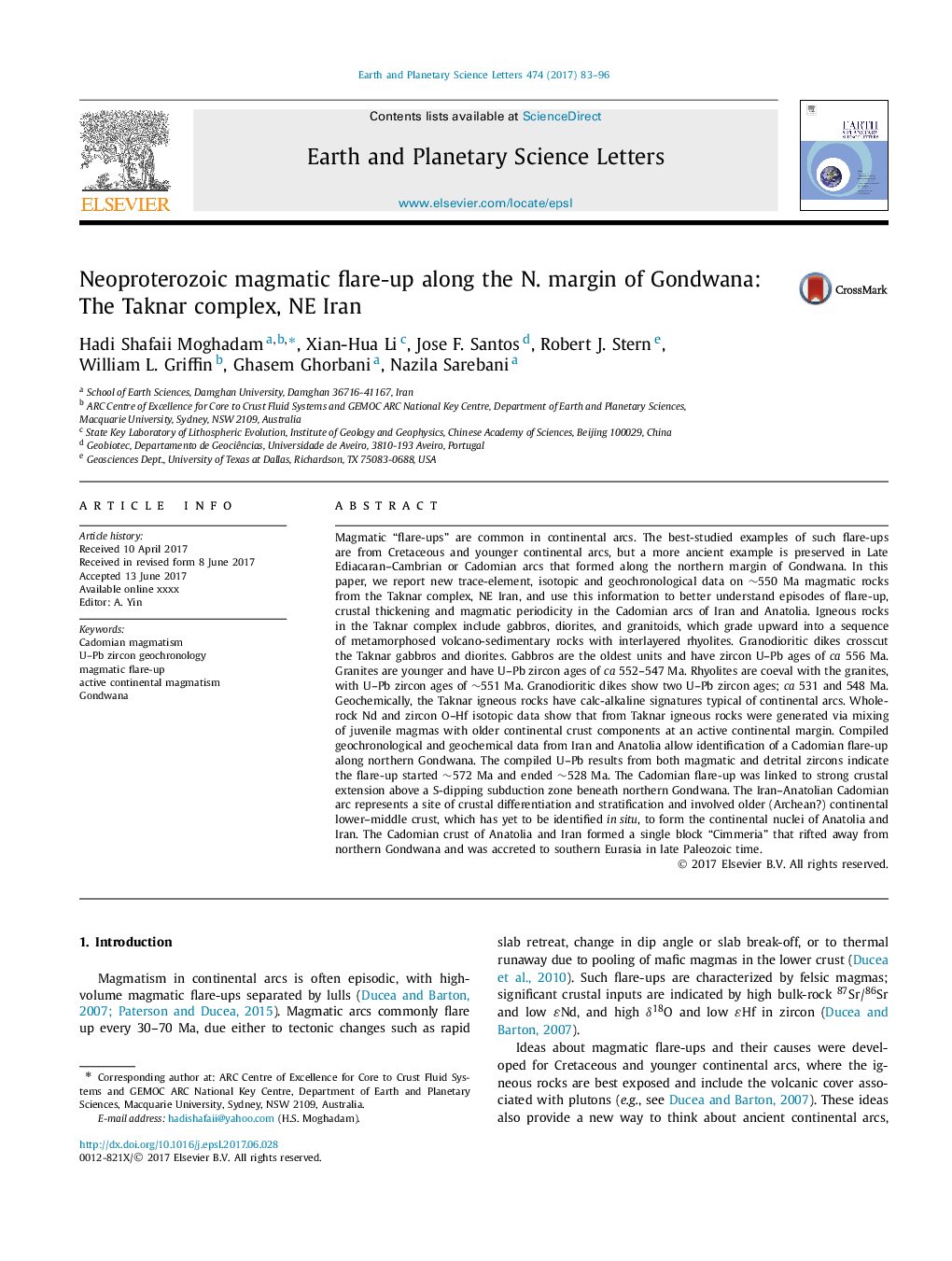| کد مقاله | کد نشریه | سال انتشار | مقاله انگلیسی | نسخه تمام متن |
|---|---|---|---|---|
| 5779722 | 1634682 | 2017 | 14 صفحه PDF | دانلود رایگان |
عنوان انگلیسی مقاله ISI
Neoproterozoic magmatic flare-up along the N. margin of Gondwana: The Taknar complex, NE Iran
دانلود مقاله + سفارش ترجمه
دانلود مقاله ISI انگلیسی
رایگان برای ایرانیان
موضوعات مرتبط
مهندسی و علوم پایه
علوم زمین و سیارات
علوم زمین و سیاره ای (عمومی)
پیش نمایش صفحه اول مقاله

چکیده انگلیسی
Magmatic “flare-ups” are common in continental arcs. The best-studied examples of such flare-ups are from Cretaceous and younger continental arcs, but a more ancient example is preserved in Late Ediacaran-Cambrian or Cadomian arcs that formed along the northern margin of Gondwana. In this paper, we report new trace-element, isotopic and geochronological data on â¼550 Ma magmatic rocks from the Taknar complex, NE Iran, and use this information to better understand episodes of flare-up, crustal thickening and magmatic periodicity in the Cadomian arcs of Iran and Anatolia. Igneous rocks in the Taknar complex include gabbros, diorites, and granitoids, which grade upward into a sequence of metamorphosed volcano-sedimentary rocks with interlayered rhyolites. Granodioritic dikes crosscut the Taknar gabbros and diorites. Gabbros are the oldest units and have zircon U-Pb ages of ca 556 Ma. Granites are younger and have U-Pb zircon ages of ca 552-547 Ma. Rhyolites are coeval with the granites, with U-Pb zircon ages of â¼551 Ma. Granodioritic dikes show two U-Pb zircon ages; ca 531 and 548 Ma. Geochemically, the Taknar igneous rocks have calc-alkaline signatures typical of continental arcs. Whole-rock Nd and zircon O-Hf isotopic data show that from Taknar igneous rocks were generated via mixing of juvenile magmas with older continental crust components at an active continental margin. Compiled geochronological and geochemical data from Iran and Anatolia allow identification of a Cadomian flare-up along northern Gondwana. The compiled U-Pb results from both magmatic and detrital zircons indicate the flare-up started â¼572 Ma and ended â¼528 Ma. The Cadomian flare-up was linked to strong crustal extension above a S-dipping subduction zone beneath northern Gondwana. The Iran-Anatolian Cadomian arc represents a site of crustal differentiation and stratification and involved older (Archean?) continental lower-middle crust, which has yet to be identified in situ, to form the continental nuclei of Anatolia and Iran. The Cadomian crust of Anatolia and Iran formed a single block “Cimmeria” that rifted away from northern Gondwana and was accreted to southern Eurasia in late Paleozoic time.
ناشر
Database: Elsevier - ScienceDirect (ساینس دایرکت)
Journal: Earth and Planetary Science Letters - Volume 474, 15 September 2017, Pages 83-96
Journal: Earth and Planetary Science Letters - Volume 474, 15 September 2017, Pages 83-96
نویسندگان
Hadi Shafaii Moghadam, Xian-Hua Li, Jose F. Santos, Robert J. Stern, William L. Griffin, Ghasem Ghorbani, Nazila Sarebani,